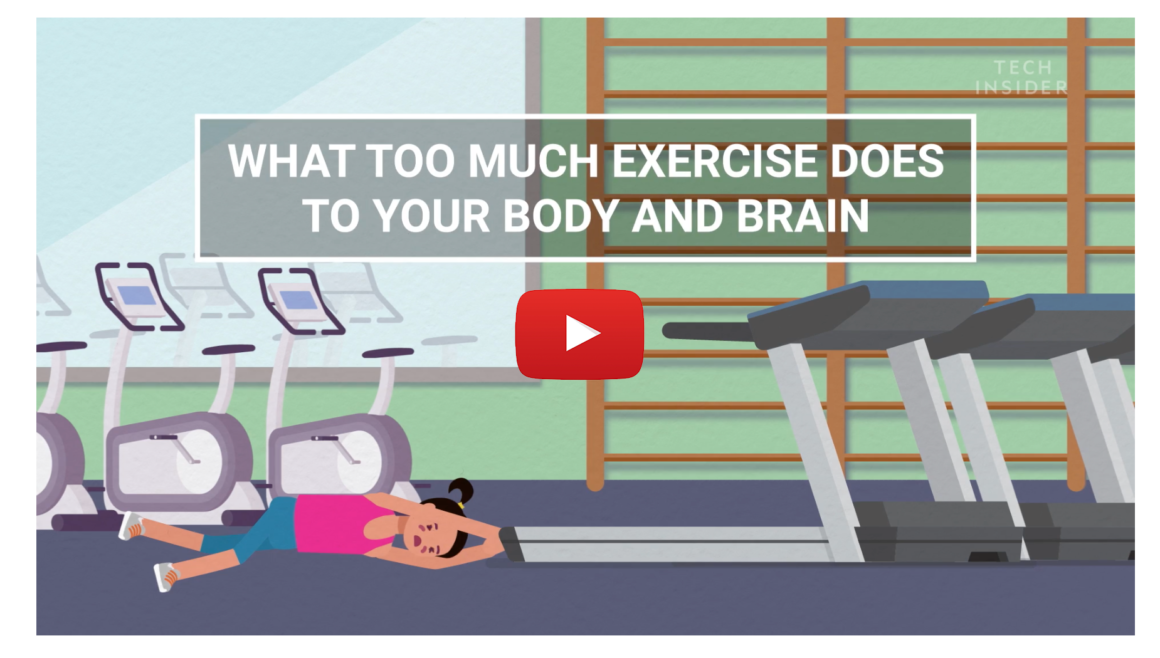While most people know that physical activity is healthy, it’s estimated that about 20% of people worldwide don’t get enough of it each day (1). In the United States, that number is more like 80% (2). Unless you have a physically demanding job, a dedicated fitness routine is likely your best bet for getting active. YThe benefits of a HIIT Workout are much higher than exercising for long periods of time.
ou don’t have to run a marathon, in fact, research suggests you are better off if you don’t run for hours on end. Extreme marathoners, triathletes, and athletes who exert effort for long periods of time may be causing their bodies more harm than good.A study of marathon runners found that after finishing extreme running events, athletes’ blood samples contain biomarkers associated with heart damage.
When the heart repeatedly endures extreme physical stress, the temporary damage may lead to remodeling of the heart or physical changes such as thicker walls and scarring. (2) In a different study, researchers found that people who exercised three times the recommended amount — or the equivalent of 450 minutes a week of moderate activity — had a 27% higher risk of developing Coronary Artery Calcium.(3) Researchers are discovering the dangers of over exerting our bodies and the benefits of short intense activities for our health.
“Extreme, long-term endurance exercise puts equally extreme demands on the cardiovascular system,” says Dr. Singh.
High intensity interval training (HIIT) is a very efficient way to exercise and may help you burn more calories than you would with other forms of exercise. It involves short bursts of intense exercise alternated with low intensity recovery periods. Typically, a HIIT workout will be 10–30 minutes in duration. For example, a HIIT workout using a stationary bike could consist of 30 seconds of cycling as fast as possible with high resistance, followed by several minutes of slow, easy cycling with low resistance. You would typically complete 4–6 30 sec intense cycles in one workout. HIIT not only provides the benefits of longer-duration exercise in a much shorter amount of time but also may provide some unique health benefits.
HIIT can burn calories in a shorter amount of time
While doing a HIIT workout, you burn the same amount of calories as you would during a typical workout, like running. One study measured the calorie burn during 30 minutes of HIIT, compared to running, and biking. The HIIT repetition consisted of 20 seconds of maximal effort followed by 40 seconds of rest repeated over the 30 minutes. Those running and biking remained at the same intensity for the full 30 minutes. Researchers discovered that the people engaging in HIIT training burned 25–30% more calories than the other forms of exercise (8). This means the HIIT participants were exercising for only one-third of the time that the running and biking groups were and burning more calories.

HIIT can burn calories long after you stop
You burn more calories after a HIIT workout than you do during a steady-state cardio exercise like running, where your heart rate remains relatively stable. Several studies have demonstrated HIIT’s impressive ability to increase your metabolic rate for hours after exercise (10, 11, 12).
Some researchers found that HIIT increases your metabolism after exercise more than if you were jogging or weight training (10). Nine minutes after the exercises stopped, researchers found that the HIIT group was burning an average of 3 kilocalories per minute, compared with 2.8 kilocalories per minute after the steady-state run. (24) The same study also found that HIIT could shift the body’s metabolism toward using fat for energy rather than carbs.
Burning calories after you stop exercising is called excess post-exercise oxygen consumption (EPOC). EPOC occurs when your body burns more calories healing the wear and tear from an intense workout. It’s common with HIIT workouts because the exercise is so intense, and it has been linked to effective muscle growth. (24)
Due to the intensity of the workout, HIIT can elevate your metabolism for hours after exercise. This results in burning additional calories even after you have finished exercising.

HIIT helps with fat loss
Studies have shown that HIIT can help you lose fat. One review looked at 13 experiments and 424 adults with overweight or obesity. A 2019 review analyzed 77 scientific studies and found the people who did HIIT workouts lost 28.5% more fat than people who did moderately-intense continuous exercise, like running. (30) In other studies researchers found that both HIIT and traditional moderate-intensity exercise can reduce body fat and waist circumference (13).
May gain muscle using HIIT
In addition to helping with fat loss, HIIT could help increase muscle mass in in the muscles being used the most often (18, 19, 20). Specifically those who were less active to begin with (21) as some research in active people has failed to show higher muscle mass after HIIT programs (22).
Most HIIT workouts involve many different movements. This allows you to work out different groups of muscle during the same workout — for example, a HIIT workout might have you do squats, push-ups, and burpees — which all target different muscles.
A 2017 study found that a six-week HIIT program improved muscle power in men, measured by peak power output (PPO). Before the HIIT program, the mens’ average absolute PPO was 799 watts, and after the workout it was 865 watts, an increase of about 8%. (31)
Additionally, a 2017 study found that a 12-minute HIIT workout affected the muscles more than a 40-minute aerobic workout for overweight female teens. This was measured by tracking levels of irisin, a hormone released by the muscles in response to exercise. (32)
Weight training continues to be the gold standard form of exercise to increase muscle mass, but high intensity intervals seems to support a small amount of muscle growth (21).

HIIT can improve oxygen consumption
Oxygen consumption is your muscles’ ability to use oxygen. Endurance training is typically used to improve your oxygen consumption. Traditionally, this consists of long sessions of continuous running or cycling at a steady rate. However, it appears that HIIT can produce the same benefits in a shorter amount of time (17, 18, 23).
One study found that participants who performed 20-minute HIIT workouts 4 days per week for 5 weeks improved their oxygen consumption by 9% (6). This was almost identical to the improvement in oxygen consumption in the other group in the study, who cycled continuously for 40 minutes per day, 4 days per week.
Another study found that 8 weeks of exercising on the stationary bike using traditional exercise or HIIT increased oxygen consumption by about 25% (7). Once again, the total time spent exercising was much different between groups: 120 minutes per week of traditional exercise versus only 60 minutes per week of HIIT.
A 2017 study split 26 school children into two groups: one group engaged in HIIT training, and one did a more traditional exercise regimen. The HIIT group improved their cardiorespiratory capacity, or the ability of their heart and lungs to deliver oxygen to the body, more than the traditional exercise group, and also lost more fat. (33)
In addition, a 2020 study found that just one HIIT session improved blood flow to the brain, saying “HIIT is an effective time-efficient alternative to long-duration lower-intensity exercise that offers similar vascular benefits.” (34)
Heart disease accounts for one-quarter of deaths in the US and improving cardiovascular health can reduce your risk for heart disease, making HIIT workouts a great choice. (35)

HIIT can reduce heart rate and blood pressure
A large amount of research indicates HIIT can reduce heart rate and blood pressure in people with overweight and obesity, populations in which high blood pressure is common (17). One study found that 8 weeks of HIIT on a stationary bike decreased blood pressure as much as traditional, continuous endurance training in adults with high blood pressure (7). In this study, the endurance training group exercised 4 days per week for 30 minutes per day, and the HIIT group exercised only 3 times per week for 20 minutes per day.
A 2017 study found that a session of HIIT resulted in a more immediate reduction in blood pressure than a session of steady-state cardio. (36) Some researchers have found that HIIT may even reduce blood pressure more than the frequently recommended moderate-intensity exercise (25).

HIIT can reduce blood sugar
HIIT programs lasting less than 12 weeks can reduce blood sugar (17, 26). A summary of 50 studies found that HIIT not only reduces blood sugar but also improves insulin resistance more than traditional continuous exercise (27).
Based on this information, it is possible that high intensity exercise is particularly beneficial for those at risk for type 2 diabetes. In fact, some experiments specifically in people with type 2 diabetes have demonstrated the effectiveness of HIIT for improving blood sugar (28). Research in healthy people indicates that HIIT may be able to improve insulin resistance even more than traditional continuous exercise (23).
HIIT improves aerobic and anaerobic performance
While its health benefits are very important, HIIT also improves performance in both anaerobic and aerobic activities (29).
Whether you’re an athlete or a weekend warrior or you just enjoy running around with your kids, HIIT training will improve your performance during these tasks with just a few short sessions per week.
“HIIT is a time-efficient strategy to get the benefits typically associated with longer bouts of traditional cardio,” Martin Gibala
HIIT is more time-efficient
We know: You already know these workouts are more efficient than any other kind. But, there’s science to back up just how crazy-efficient they are. “You can get the same, if not greater, results in half the time of low-intensity longer-duration workout sessions,” says Holland, citing a 2013 study in the Journal of Physiology. That study found that sedentary men who did 40-60 minutes of cycling at 65% of their max five times a week, and those who did sprint interval training for less than 12 minutes each time three times a week saw similar results, including reduced aortic stiffness and increased insulin sensitivity. (37)
There’s no doubt that interval training can be a time-efficient way to burn calories. Researchers have repeatedly shown that people can burn comparable amounts of calories in HIIT routines lasting, say, 20 minutes, compared to longer continuous exercise routines lasting, say, 50 minutes. The reason for that, Gibala said, is that higher-intensity exercise, like intervals, results in a greater disturbance of the body’s homeostasis, “and it literally takes more energy and oxygen to return it to normal basal levels.” (We’ll get to the related “afterburn” effect in a moment.) (36)
Dr. Michelle Botsford, a physical therapist and certified strength and conditioning specialist, said the study offers some very practical information for busy people.
“In a world where we are all working with limited time and availability, HIIT provides a way for people to get their heart rate up with a minimal amount of time required to see benefits,” she said.
“The key is in the short bursts of activity. These intervals should truly be “high intensity” and push participants to near maximal effort. When training at this high level of intensity, your heart becomes a lot more efficient at circulating blood and oxygen throughout the body. This results in improved aerobic capacity, also known as VO2max. This VO2max value is an excellent predictor of overall health.”
Gaesser added that short bursts of exercise may help keep people engaged with the workout.
“This is not enough time to really give someone a sense of fatigue or discomfort,” Gaesser said. “Plus, the whole session only requires 10 minutes. Since ‘lack of time’ is the most frequently used excuse people mention for not exercising, well… can’t use that excuse anymore!” (1).

What does a HIIT routine look like?
The difference between HIIT from the steady-state, continuous types of exercise — jogging at an even pace or walking, — is intervals of heart-pounding intensity exercise
4-by-4 from Norway is a lab tested HIIT workout that has a warmup, followed by four four-minute intervals (again, where your heart rate reaches past 80 percent of its maximum capacity), each interspersed with a three-minute recovery period, and finished off with a cool-down.
So, for example, you’d jog for 10 minutes to warm up, then do four four-minute intervals of faster running, with three three-minute intervals of moderate jogging or brisk walking in between, and a five-minute cool down at the end. And you can substitute jogging with other aerobic exercises, such as biking or swimming. The whole routine should take 40 minutes.
A shorter heavily studied routine is the 10-by-1, which involves 10 one-minute bursts of exercise each followed by one minute of recovery. (36)
Mayo Clinic exercise researcher Michael Joyner said in 2016. “There’s observational data in athletes going back almost 100 years showing the benefits of a few bouts of really high-intensity exercise in people.” He added: “If you want to get people to their biological maximum, they need to be doing four to five times of three- to five-minute intervals.” (36)
High intensity interval training is a very efficient way to exercise and may help you burn more calories than you would with other forms of exercise.
Some of the calories burned because of high intensity intervals come from a higher metabolism, which lasts for hours after exercise.
Overall, HIIT produces many of the same health benefits as other forms of exercise in a shorter amount of time.
These benefits include decreases in body fat, heart rate, and blood pressure. HIIT may also help lower blood sugar and improve insulin sensitivity.
So, if you’re short on time and want to get active, consider trying high intensity interval training.










